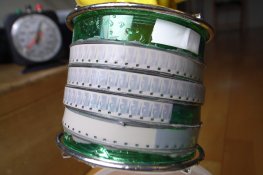mr.datsun
Member
Having reached an (almost) acceptable plateau in my reversal processing experiments with Dokumol/Dokumol (1st/2nd dev), I switched tests to Rodinal/Rodinal to get a fresh perspective on things.
Rodinal has suddenly proved to be very viable alternative for me as a Reversal 1st dev. But I am now getting warmer-browner tone images than I was getting with the cooler neutral Dokumol which I really do not want.
I first used Rodinal/Rodinal and found that a Rodinal/Dokumol combination (maybe) appears to ameliorate the brown effect, but it remains. It may be a connected of 1st dev temperature but I'm not clear on this one yet.
Question - will there be a way to remove/neutralise this brown tone if I have to accept it as a byproduct of the process?
PROCESS
R09 + Na2S2O3, KMnO4/H2SO4 bleach, Foma Clearing bath, Light, R09 or Dokumol, Fix with Tetenal hardener.
Rodinal has suddenly proved to be very viable alternative for me as a Reversal 1st dev. But I am now getting warmer-browner tone images than I was getting with the cooler neutral Dokumol which I really do not want.
I first used Rodinal/Rodinal and found that a Rodinal/Dokumol combination (maybe) appears to ameliorate the brown effect, but it remains. It may be a connected of 1st dev temperature but I'm not clear on this one yet.
Question - will there be a way to remove/neutralise this brown tone if I have to accept it as a byproduct of the process?
PROCESS
R09 + Na2S2O3, KMnO4/H2SO4 bleach, Foma Clearing bath, Light, R09 or Dokumol, Fix with Tetenal hardener.

















